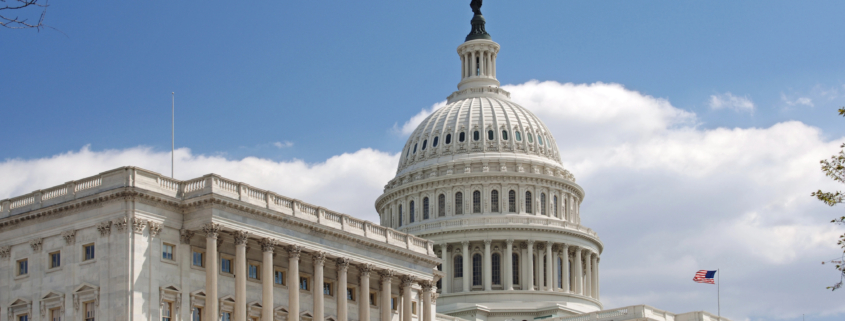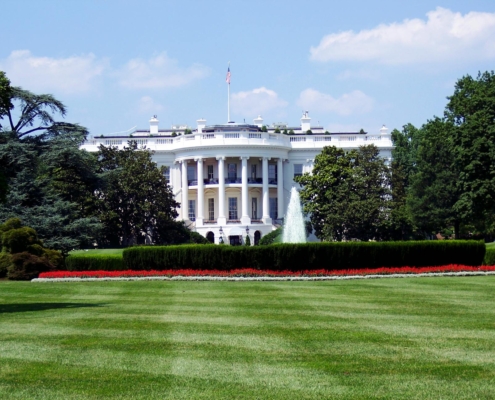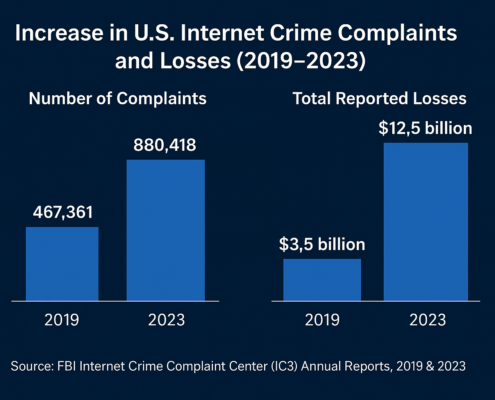U.S. Office of Management & Budget – 2024 Update
16 May 2024
The U.S. Federal Government is undergoing a major, decades-long transformation in its information technology, requiring the adoption of IPv6 on at lease 80% of IP-enabled devices and networks for all federal agencies by 2025. Given its size, the federal government can move at a glacial pace, but it is progressing. In this article, we cover some of the reasons and implications of the transformation, and where it stands in 2024.
Like the BEAD Program, this is a large, multi-year government infrastructure project that will have broad impacts on the internet proptol usage across the U.S.
In 2020, the Congressional Office of Management and Budget (OMB) issued a memorandum for the transition to IPv6, making it the standard internet protocol for the federal government officially, and going forward. This was 25 years after IPv6 was first introduced in 1995.
IPv6 adoption in general has been a slow process. Adoption did not receive significant effort until the original blocks of IPv4 were exhausted for the various regional internet registries between 2011 and 2019. For ARIN, the North American regional internet registry which happens to be the largest of five, this happened in 2017.
The Federal government holds hundreds of millions of IPv4 Addresses
2021, Congress passed a bill requiring the Department of Defense to sell unused IPv4 addresses, requiring that this be completed within 10 years, and using the proceeds to fund the federal government.
Not later than 10 years after the date of the enactment of this Act, the Secretary of Defense shall sell all of the IPv4 addresses described in subsection (b) at fair market value. The net proceeds collected from a sale under this section shall be deposited in the General Fund of the Treasury.
Later in 2021, the Pentagon transferred 175 million IPv4 addresses, just to a mysterious company, fueling speculation that it was selling them.
2023: New Rules for Federal Contractors
The Biden administration took a step forward in 2023, when The Federal Acquisition Regulatory (FAR) Council issued rules for federal contractors for adopting cybersecurity requirements for all new contracts. These involve new reporting rules for security incidents, and standardize requirements for federal information systems.
Federal standardization guidelines now require that contractors use IPv6, as specified by the Commerce Department’s National Institute of Standards and Technology (NIST) program’s IPv6 standards, and that the contractors provide a declaration of compliance.
Mandates on federal contractors mean that they will adopt much faster than the government itself, as these requirements apply to all new contracts, and don’t rely on legacy systems, so this speeds up the transition process.
In 2024, the process of transition to IPv6 is still underway. With a 10 year timeframe for just some federal agencies to offload IPv4, it’s possible this could go well into the 2030s.
Advantages of IPv6 Addressing
There are a number of advantages to IPv6 adoption for the federal government, even if the transition is a slow one. Some of the key ones:
Different Secure Protocols
With built-in security protocols such as IPsec, IPv6 provides greater confidentiality, authentication, and data integrity. This is ideal for federal agencies that handle sensitive information. It provides end-to-end encryption and authentication of IP packets. In addition, IPv6 supports secure neighbor discovery, which guards against spoofing attacks.
IPv6 is Virtually Limitless
32-bit addressing, used by IPv4, allows around 4.3 billion unique identifiers. By contrast, IPv6 uses 128-bit addressing, allowing approximately 340 undecillion unique addresses. IPv6 is unlikely to ever run out of addresses, and its scale makes it impossible to scan all the addresses, which provides greater security.
Intended to Optimize Network Performance
The need for complex configurations is reduced by IPv6, as its default configuration is more sophisticated than IPv4 by design. It also improves packet routing efficiency. Its increased address space reduces the frequency of address conflicts and enhances network performance, ultimately leading to faster and more reliable internet connections.
Made to be Future-Proof
Transitioning to IPv6 ensures that federal agencies are equipped to handle the demands of tomorrow’s technology. As more devices connect to the internet, having a scalable addressing strategy becomes vital for ongoing growth and innovation.
IPv4 isn’t Going Away Anytime Soon
In spite of the exhaustion of the global free pool of IPv4 addresseses, there are still 4.3 billion addresses. IPv4 remains in use, and its relative simplicity makes its popularity endure. Both IPv4 and IPv6 will continue to coexist for decades. A secondary market for IPv4 has emerged, and the addresses have become more valuable over time.
◼️
Other Popular Blog Posts
Discover more from Brander Group
Subscribe to get the latest posts sent to your email.



 2024
2024